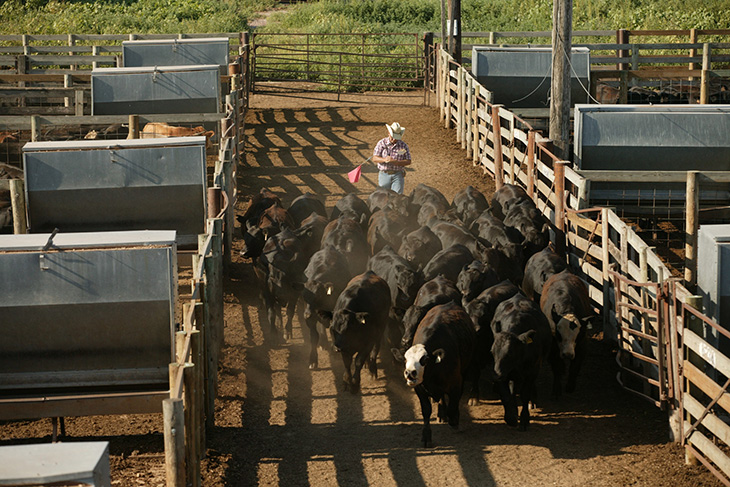
First decrease in cattle feedlot inventories in 33 months
Friday, September 27, 2019
A larger than projected decrease in August cattle placements pulled U.S. feedlot inventories lower than expected, coming in at 10.98 million head, down 1.3 percent from one year ago.
“This is the first year-over-year monthly decrease since December 2016,” said Derrell Peel, Oklahoma State University Cooperative Extension livestock marketing specialist. “August placements dropped partly in response to market shocks resulting from the Aug. 9 Tyson Finney County plant fire.”
August marketings were as expected, coming in at 98.5 percent of last year. August had one less business day compared to 2018.
The U.S. Department of Agriculture’s September Cattle on Feed report highlighted some regional differences in the current feedlot situation among America’s four largest cattle feeding states.
Texas had a Sept. 1 on-feed inventory that was 101.9 percent of year-earlier levels at 2.73 million head, with August placements up 4.8 percent year over year.
Kansas had a Sept. 1 on-feed inventory that was 93 percent of one year ago at 2.34 million head, with August placements 85 percent of year-earlier levels.
Nebraska had a Sept. 1 on-feed inventory of 2.16 million head, 101 percent of last year, with August placements down 7.3 percent year over year.
Colorado had 0.93 million head of feedlot cattle, 103.3 percent compared to Sept. 1, 2018, with August placements 83 percent of year-earlier levels.
The USDA report indicated feedlot placements decreased for the fourth consecutive month in August. Total placements the last six months, capturing the bulk of current cattle on feed, decreased 0.8 percent year over year. However, feedlots have continued to market cattle in a timely manner. Monthly marketings for the past six months increased 1 percent year over year.
“Still, monthly feedlot inventories likely have not peaked cyclically just yet,” Peel said. “The short-term disruption of the plant fire in August and early September likely delayed some feedlot placements. A larger 2018 calf crop and generally good forage conditions in 2019 likely means significant numbers of yearlings are still to be marketed in the fourth quarter.”
The estimated 2019 calf crop is equal to 2018 levels, meaning plenty of new-crop calves will be marketed this fall, with ample feeder supplies through 2020.
“It will likely be a few more months before we will see sustained year-over-year decreases in feedlot inventories,” Peel said.
The Oklahoma Cooperative Extension Service is one of two state agencies administered by OSU’s Division of Agricultural Sciences and Natural Resources, and is a key part of the university’s state and federally mandated teaching, research and Extension land-grant mission.
MEDIA CONTACT: Donald Stotts | Agricultural Communications Services | 405-744-4079 | donald.stotts@okstate.edu
